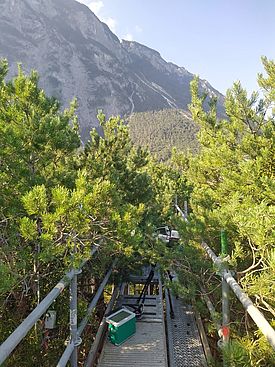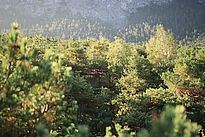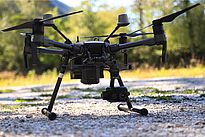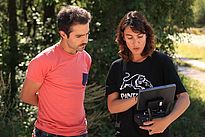Detecting temperature thresholds for photosynthesis and understanding how they are controlled by long-term acclimation to soil drought
Alice Gauthey
2021 - 2023
We evaluate the potential of thermal imaging with unmanned aerial vehicles (UAV) to detect drought stress in Pinus sylvestris in a long-term irrigation experiment in the Pfyn forest in Valais (southern Switzerland).

Drought-induced hydraulic failure and increased Vapor Pressure Deficit (VPD) are some of the main drivers of forest mortality globally. Unmanned aerial vehicles (UAVs) can assess canopy temperature over large areas.
Under water-stressed conditions, trees close their stomata, which results in lower transpiration rate and heat dissipation. Thus, high leaf temperature is often the signal of drought stress in trees. Mapping leaf thermal signature in forest ecosystems can provide important insight into management strategies under global warming.
In this study, we evaluate the potential of UAV thermal imaging to detect drought stress in Pinus sylvestris in a long-term irrigation experiment in southern Switzerland.
Using a field-based irrigation experiment with P. sylvestris, we determine how long-term acclimation to changing soil moisture affect the water use sensitivity of trees to soil and atmospheric droughts and its feedback to canopy temperature regulation and carbon uptake.
We further investigate the seasonal and diurnal relationships between ecophysiological traits, such as gas exchange, water potentials, and leaf temperature.



